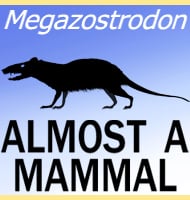In Depth
Diandongosuchus is classed as a poposaurid rauisuchian, though while most of the members of this group such as Poposaurus, Arizonasaurus and Lotosaurus are terrestrial, Diandongosuchus seems to have been semiaquatic and living in a similar manner to a crocodile. At the time of writing the only other poposaurid thought to be similar to Diandongosuchus is Qianosuchus which was named earlier. However it should be pointed out that the Poposauridae is a group of rauisuchians that is often used to house all of the odds and ends genera that don’t quite fit in anywhere else.
A semi-aquatic lifestyle for Diandongosuchus has been established upon the basis that the holotype specimen was found in a marine rock deposit, and with the remains of fish within its stomach contents, clearly indicating that Diandongosuchus was a fish eater (piscivore). The position of the nostrils is also further back on the skull, while the premaxilla (the forward tooth bearing bone of the upper jaw) has a larger than usual number of teeth. These features are commonly seen upon other fish eating animals as they help facilitate prey capture.
Further Reading
- A new archosaur (Diapsida, Archosauriformes) from the marine Triassic of China. - Journal of Vertebrate Paleontology 32(5):1064-1081 - C. Li, X. -C. Wu, L. Zhao, T. Sato & L. Wang - 2012.










